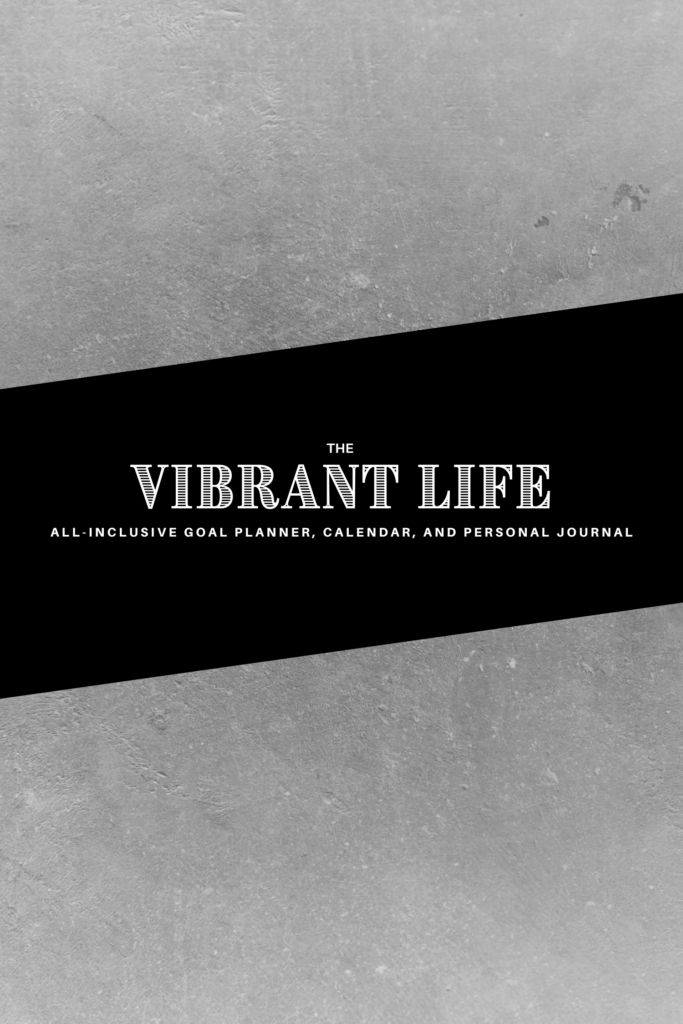Estimated Reading Time 9 Minutes
Hey You! Welcome to The Vibrant Life Podcast, the show that delves deep into timeless parables and philosophical concepts to unravel the mysteries of life. Today we’re taking a journey through the parable of the Chinese farmer, exploring the insight that life is 50/50, and drawing strength from spiritual and philosophical perspectives. I’m your host, Emily Romrell. Join me as we unveil the secrets to living in harmony with life’s twists and turns.
Before we dive in, I’m thrilled to share some of my personal projects with you:
First, Unlock some inspiration with my first poetry book, “Po~Em’s.” It’s a collection of my musings on the meaning of life. I think you will resonate with these reflections and hopefully, it will bring you some joy.
For those seeking a tangible guide on their path to success, I present to you “The Vibrant Life Goal Planner.” This comprehensive journal incorporates proven principles to help you set, track, and achieve your goals. It’s not just a planner; it’s your daily companion in the pursuit of a life you love.
The Vibrant Life Goal Planner Highlights:
- Proven Principles: Designed with proven success principles, this all-inclusive planner empowers you to succeed.
- Calendar and Journal: Track your goals, triumphs, and reflections within its pages, fostering a holistic approach to growth.
- Timeless Design: The planner follows a 90-day cycle, perfect for aligning your goals with the changing seasons. Its undated format ensures flexibility and usability at any time.
- Motivational Quotes: Each edition features new quotes to inspire and uplift you, fostering a positive mindset throughout your journey.
Both books, Po~Em’s and The Vibrant Life Goal Planner are available now on Amazon. Just plug in my name, Emily Romrell, and get your copies today!
Ok, Today let’s begin with a timeless parable that encapsulates the essence of life’s ebb and flow.
Once upon a time, there was a Chinese farmer whose horse ran away. That evening, all of his neighbors came around to commiserate. They said, “We are so sorry to hear your horse has run away. This is most unfortunate.” The farmer said, “Maybe.”
The next day the horse came back bringing seven wild horses with it, and in the evening everybody came back and said, “Oh, isn’t that lucky. What a great turn of events. You now have eight horses!” The farmer again said, “Maybe.”
The following day his son tried to break one of the horses, and while riding it, he was thrown and broke his leg. The neighbors then said, “Oh dear, that’s too bad,” and the farmer responded, “Maybe.”
The next day the conscription officers came around to conscript people into the army, and they rejected his son because he had a broken leg. Again all the neighbors came around and said, “Isn’t that great!” Again, he said, “Maybe.”
As events unfold in this story, we learn the art of patience and the power of withholding judgment in the face of life’s unpredictable twists. Many philosophers echo the farmer’s wisdom.
Seneca, a Stoic philosopher, remarked, “We suffer more in imagination than in reality.” This aligns with the farmer’s approach of withholding judgment until the full consequences unfold.
Epictetus, another Stoic philosopher, added, “We cannot choose our external circumstances, but we can always choose how we respond to them.” This echoes the farmer’s ability to respond with patience and an open mind.
Alan Watts, a prominent philosopher, offered a unique interpretation of the Chinese farmer parable. Watts highlighted the idea of the interconnectedness of events and the folly of prematurely labeling them as good or bad. He suggests that our perception of events as positive or negative is often based on limited understanding and that life is a dance of constant change. Watts invites us to see the beauty in the unfolding dance of life without rigid judgments.
One of my favorite teachers from the last few years has been Brooke Castillo. She hosts The Life Coach School Podcast and she teaches others to become life coaches, and her podcast is a gold mine for personal development. I honestly have no wish to be a life coach but I have learned so much by listening to her.
In several episodes of The Life Coach School Podcast, Brooke Castillo shares the idea that life is inherently 50% good and 50% bad. This concept challenges the traditional dichotomy of labeling experiences as either wholly positive or entirely negative. Brooke encourages listeners to recognize that life’s journey is a dynamic interplay of joy and challenges, successes and setbacks and that this balance is a fundamental aspect of the human experience. This positive reframing empowers individuals to navigate life’s fluctuations with a sense of resilience and acceptance.
It’s vital to realize that we will experience both ecstatic joy and dreadful tragedies and that’s ok. And actually, when tragedy strikes we want to feel those negative emotions. They are so important. They are just as necessary as positive emotions which we should also embrace as often as we can.
When we rigidly categorize situations as strictly good or bad, we set ourselves up for unnecessary suffering. Instead, Brooke invites listeners to adopt an “and” mindset, allowing for the simultaneous acknowledgment of both positive and negative aspects. In doing so, individuals can cultivate a more balanced, compassionate relationship with themselves and others.
Let’s look at some everyday life examples I came up with:
Tricia is a budding entrepreneur determined to open her dream bakery. The grand opening is just hours away when the main oven malfunctions, threatening a major setback. Undeterred, Tricia recalls the 50/50 philosophy. Instead of seeing it as a disaster, she transforms the challenge into an opportunity. Tricia enlists the help of a local culinary school, borrowing their equipment. The setback becomes a community event, drawing more attention to the bakery’s resilience. In the end, Tricia not only opens her doors but gains a loyal customer base who admire her innovative spirit in turning adversity into triumph.
Jake is a fitness enthusiast passionate about conquering new challenges. During a rigorous trail run, he twists his ankle, momentarily halting his fitness journey. Applying the 50/50 mindset, Jake shifts his focus from the setback to the possibilities. He discovers a passion for swimming, an activity he never considered before. The pool becomes his sanctuary for rehabilitation and newfound fitness exploration. The twist, once seen as a hurdle, transforms into a catalyst for Jake’s overall well-being. His story inspires others at the gym, emphasizing that life’s unexpected turns can lead to unforeseen personal growth.
Now, imagine Maria, who experiences the profound loss of a loved one. Grieving and navigating the emotional storm, Maria leans on the 50/50 philosophy to embrace the depth of her feelings. She recognizes that sorrow is an intrinsic part of life, acknowledging the pain without resisting it. While mourning the loss, Maria discovers a reservoir of inner strength and resilience. By allowing herself to experience the negative emotions fully, she paves the way for eventual healing. Maria’s journey teaches us that even in the darkest moments, accepting the 50/50 nature of life enables us to find strength amid grief and honor the complexity of our emotions
The 50/50 perspective highlights the beauty of contrast in life. Just as a painting gains depth from a combination of light and shadow, our journey becomes more meaningful when we appreciate the contrasts. The highs and lows, successes and failures, joys and sorrows create a nuanced and vibrant narrative that shapes our unique life story. By acknowledging and accepting the inevitability of both positive and negative emotions, we become more resilient, compassionate, and authentic in our journey. Life’s 50/50 is a celebration of the full human experience.
Let’s explore some actionable steps to apply these principles to our everyday lives. Here are 8 practical suggestions:
- Practice Mindfulness: Cultivate awareness of your thoughts and emotions. Mindfulness allows you to observe without immediate judgment, creating space for thoughtful responses.
- Adopt a Growth Mindset: Embrace challenges as opportunities for growth. Shift your perspective from seeing difficulties as roadblocks to viewing them as stepping stones toward personal development.
- Express Gratitude: Regularly acknowledge the positive aspects of your life. Gratitude fosters a positive mindset and helps balance the inevitable challenges with moments of joy.
- Develop Resilience: Build your resilience by acknowledging setbacks as part of the journey. Resilient individuals bounce back from adversity with increased strength and determination.
- Set Realistic Expectations: Recognize that life is a mix of ups and downs. Setting realistic expectations for yourself and others reduces the impact of unexpected challenges.
- Connect with Others: Share your experiences with trusted friends or family. Connection provides support during difficult times and enhances the joy in positive moments.
- Celebrate Small Wins: Acknowledge and celebrate your achievements, no matter how small. This practice cultivates a positive mindset and fuels motivation.
- Embrace Uncertainty: Practice letting go of the need for certainty. Embracing the unknown allows you to navigate life’s twists and turns with greater ease.
These simple yet powerful steps are within reach for everyone. You don’t have to try and implement all of these ideas at once either. I don’t want you to be overwhelmed. But even just applying one or two of the items from that list will improve your life significantly.
In The Church of Jesus Christ of Latter-day Saints, patience is often emphasized. The concept of “enduring to the end” encourages believers to remain steadfast in their faith despite life’s challenges. But enduring to the end is more than just surviving and waiting out your time here on earth. Let’s take a look at a story from the Book of Mormon to learn more.
Picture this: Nephi, on a challenging trek through the wilderness, suddenly faces a major hiccup—his trusty bow snaps. The mood among his family? Let’s just say frustration and anger took center stage. By this time we are used to his brothers Lamen and Lemuel being difficult, but this time the whole family is against Nephi. Even his father and mother complain and find fault with him.
I really look up to Nephi and his attitude when dealing with hard things. Here’s what kind of a guy he is. Instead of wallowing in defeat, Nephi takes the broken bow as a challenge. He heads into the woods and channels his inner craftsman to carve out a new bow from a nearby tree. What was initially a moment of despair transforms into a story of resilience and grit.
Nephi’s new bow becomes a symbol of his determination, a tangible reminder that setbacks are just setups for comebacks. Undeterred by familial discord, he not only fashions a new bow but, with a humble spirit he seeks advice from his father, Lehi, on where to find game.
This isn’t just a tale of survival; it’s a testament to pressing forward in faith despite our trials. Nephi teaches us that life’s problems, even when they seem like the end of the world, can be the launching pad for personal growth. Even in the face of disapproval from his loved ones, Nephi emerges stronger, armed with a redefined purpose and an unyielding spirit to navigate the wild twists and turns of life. I want to try to follow his example. I hope you will too.
Modern conference talks from LDS leaders echo sentiments of patience and trust in divine timing. Elder Jeffrey R. Holland reassures us, “Don’t you quit. You keep walking. You keep trying. There is help and happiness ahead” (Jeffrey R. Holland, “An High Priest of Good Things to Come,” General Conference, April 1999).
Additionally, the scriptures provide guidance on enduring life’s challenges. In Ecclesiastes 3:1, we find:
1 To every thing there is a season, and a time to every purpose under the heaven:
2 A time to be born, and a time to die; a time to plant, and a time to pluck up that which is planted;
3 A time to kill, and a time to heal; a time to break down, and a time to build up;
4 A time to weep, and a time to laugh; a time to mourn, and a time to dance;
5 A time to cast away stones, and a time to gather stones together; a time to embrace, and a time to refrain from embracing;
6 A time to get, and a time to lose; a time to keep, and a time to cast away;
7 A time to rend, and a time to sew; a time to keep silence, and a time to speak;
8 A time to love, and a time to hate; a time of war, and a time of peace.
This aligns with the Chinese farmer’s recognition that events unfold in their own time, contributing to a greater purpose.
Another timeless phrase that encapsulates the transient nature of difficulties is “This too shall pass.” While not a direct scripture, it echoes the wisdom found in biblical verses like Psalm 30:5: “For his anger endureth but a moment; in his favor is life: weeping may endure for a night, but joy cometh in the morning.”
The story of the Chinese farmer, Brooke Castillo’s 50/50 principle, and other spiritual and philosophical insights teach us that it’s not about seeking out constant highs or avoiding lows. Your life is a masterpiece that is composed of contrasting sounds, much like a symphony. The key is to embrace it all, whether that means making bows out of broken moments or approaching situations with a simple “maybe”.
I hope we will all remain strong in the quest to live life at our best, knowing that obstacles are opportunities for growth and that our flaws help define our beauty. Let’s find the balance between the terrific and the terrible, and Live The Vibrant Life!




